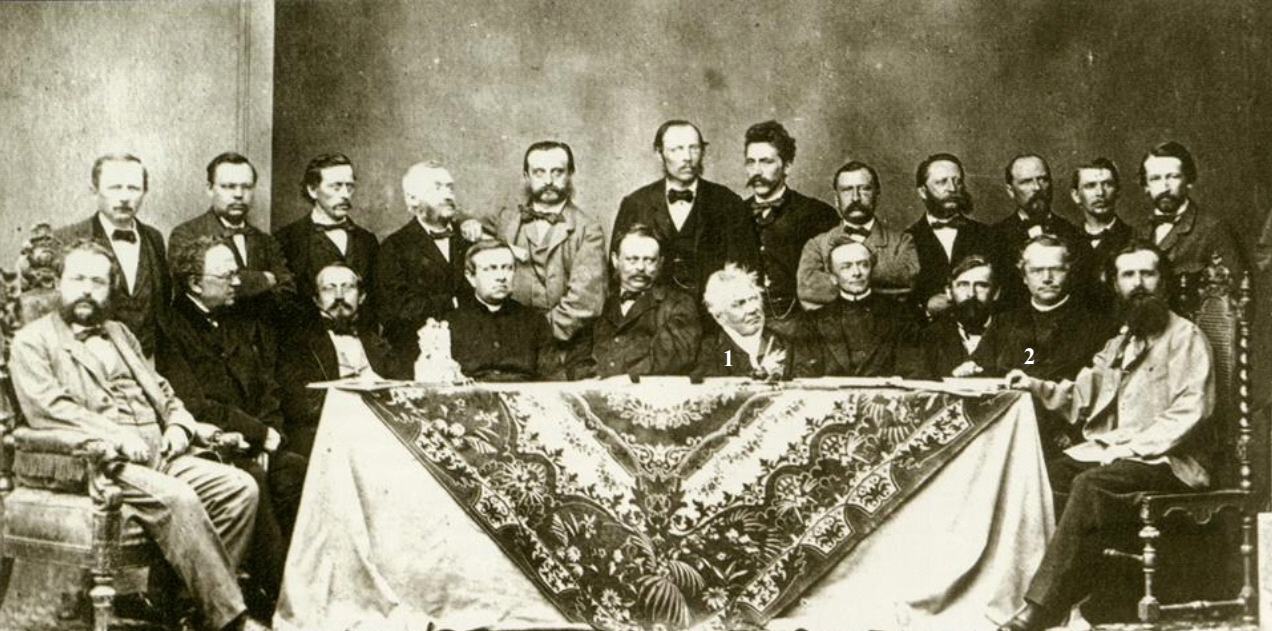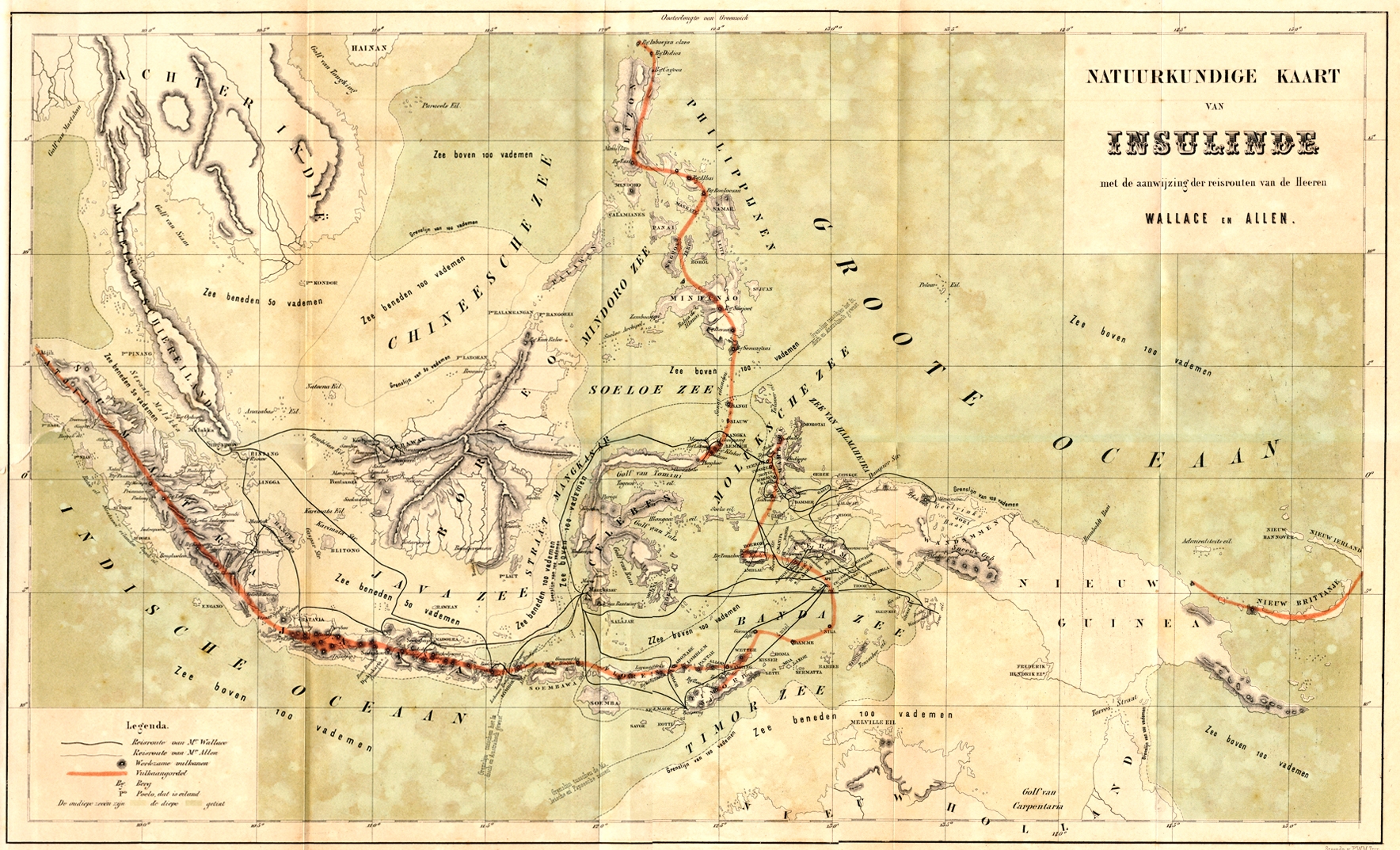|
Blending Inheritance
Blending inheritance is an obsolete theory in biology from the 19th century. The theory is that the progeny inherits any characteristic as the average of the parents' values of that characteristic. As an example of this, a crossing of a red flower variety with a white variety of the same species would yield pink-flowered offspring. Charles Darwin's theory of inheritance by pangenesis, with contributions to egg or sperm from every part of the body, implied blending inheritance. His reliance on this mechanism led Fleeming Jenkin to attack Darwin's theory of natural selection on the grounds that blending inheritance would average out any novel beneficial characteristic before selection had time to act. Blending inheritance was discarded with the general acceptance of particulate inheritance during the development of modern genetics, after . History Darwin's pangenesis Charles Darwin developed his theory of evolution by natural selection on the basis of an understanding of ... [...More Info...] [...Related Items...] OR: [Wikipedia] [Google] [Baidu] |
The Guardian
''The Guardian'' is a British daily newspaper. It was founded in Manchester in 1821 as ''The Manchester Guardian'' and changed its name in 1959, followed by a move to London. Along with its sister paper, ''The Guardian Weekly'', ''The Guardian'' is part of the Guardian Media Group, owned by the Scott Trust Limited. The trust was created in 1936 to "secure the financial and editorial independence of ''The Guardian'' in perpetuity and to safeguard the journalistic freedom and liberal values of ''The Guardian'' free from commercial or political interference". The trust was converted into a limited company in 2008, with a constitution written so as to maintain for ''The Guardian'' the same protections as were built into the structure of the Scott Trust by its creators. Profits are reinvested in its journalism rather than distributed to owners or shareholders. It is considered a newspaper of record in the UK. The editor-in-chief Katharine Viner succeeded Alan Rusbridger in 2015. S ... [...More Info...] [...Related Items...] OR: [Wikipedia] [Google] [Baidu] |
Sweetpea
The sweet pea, ''Lathyrus odoratus'', is a flowering plant in the genus ''Lathyrus'' in the family Fabaceae (legumes), native to Sicily, southern Italy and the Aegean Islands. It is an annual climbing plant, growing to a height of , where suitable support is available. The leaves are pinnate with two leaflets and a terminal tendril, which twines around supporting plants and structures, helping the sweet pea to climb. In the wild plant the flowers are purple, broad; they are larger and highly variable in color in the many cultivars. Flowers are usually strongly scented. The annual species, ''L. odoratus'', may be confused with the everlasting pea, '' L. latifolius'', a perennial. Horticultural development Sweet peas, native to Sicily and Sardinia, were first mentioned by the Franciscan monk and botanist Francesco Cupani in the ''Hortus Catholicus'' (1696). Cupani first studied medicine, before entering the Franciscan order in 1681 at the age of 24, where he continued to culti ... [...More Info...] [...Related Items...] OR: [Wikipedia] [Google] [Baidu] |
Mendel's Law Of Segregation
Mendelian inheritance (also known as Mendelism) is a type of biological inheritance following the principles originally proposed by Gregor Mendel in 1865 and 1866, re-discovered in 1900 by Hugo de Vries and Carl Correns, and later popularized by William Bateson. These principles were initially controversial. When Mendel's theories were integrated with the Boveri–Sutton chromosome theory of inheritance by Thomas Hunt Morgan in 1915, they became the core of classical genetics. Ronald Fisher combined these ideas with the theory of natural selection in his 1930 book ''The Genetical Theory of Natural Selection'', putting evolution onto a mathematical footing and forming the basis for population genetics within the modern evolutionary synthesis. History The principles of Mendelian inheritance were named for and first derived by Gregor Johann Mendel, a nineteenth-century Moravian monk who formulated his ideas after conducting simple hybridization experiments with pea plants ''( P ... [...More Info...] [...Related Items...] OR: [Wikipedia] [Google] [Baidu] |
Gregor Mendel
Gregor Johann Mendel Order of Saint Augustine, OSA (; ; ; 20 July 1822 – 6 January 1884) was an Austrian Empire, Austrian biologist, meteorologist, mathematician, Augustinians, Augustinian friar and abbot of St Thomas's Abbey, Brno, St. Thomas' Abbey in Brno (Brünn), Margraviate of Moravia. Mendel was born in a Sudeten Germans, German-speaking family in the Austrian Silesia, Silesian part of the Austrian Empire (today's Czech Republic) and gained posthumous recognition as the founder of the modern science of genetics. Though farmers had known for millennia that crossbreeding of animals and plants could favor certain desirable trait (biological), traits, Mendel's pea plant experiments conducted between 1856 and 1863 established many of the rules of biological inheritance, heredity, now referred to as the laws of Mendelian inheritance. Mendel worked with seven characteristics of Pea, pea plants: plant height, pod shape and color, seed shape and color, and flower position and c ... [...More Info...] [...Related Items...] OR: [Wikipedia] [Google] [Baidu] |
Alfred Wallace
Alfred Russel Wallace (8 January 1823 – 7 November 1913) was an English naturalist, explorer, geographer, anthropologist, biologist and illustrator. He independently conceived the theory of evolution through natural selection; his 1858 paper on the subject was published that year On the Tendency of Species to form Varieties; and on the Perpetuation of Varieties and Species by Natural Means of Selection, alongside extracts from Charles Darwin's earlier writings on the topic. It spurred Darwin to set aside the Natural Selection (manuscript), "big species book" he was drafting and to quickly write an Abstract (summary), abstract of it, which was published in 1859 as ''On the Origin of Species''. Wallace did extensive fieldwork, starting in the Amazon River basin. He then did fieldwork in the Malay Archipelago, where he identified the faunal divide now termed the Wallace Line, which separates the Indonesian archipelago into two distinct parts: a western portion in which the ani ... [...More Info...] [...Related Items...] OR: [Wikipedia] [Google] [Baidu] |
Blending Inheritance
Blending inheritance is an obsolete theory in biology from the 19th century. The theory is that the progeny inherits any characteristic as the average of the parents' values of that characteristic. As an example of this, a crossing of a red flower variety with a white variety of the same species would yield pink-flowered offspring. Charles Darwin's theory of inheritance by pangenesis, with contributions to egg or sperm from every part of the body, implied blending inheritance. His reliance on this mechanism led Fleeming Jenkin to attack Darwin's theory of natural selection on the grounds that blending inheritance would average out any novel beneficial characteristic before selection had time to act. Blending inheritance was discarded with the general acceptance of particulate inheritance during the development of modern genetics, after . History Darwin's pangenesis Charles Darwin developed his theory of evolution by natural selection on the basis of an understanding of ... [...More Info...] [...Related Items...] OR: [Wikipedia] [Google] [Baidu] |
Intersex
Intersex people are those born with any of several sex characteristics, including chromosome patterns, gonads, or genitals that, according to the Office of the United Nations High Commissioner for Human Rights, "do not fit typical binary notions of male or female bodies". Sex assignment at birth usually aligns with a child's external genitalia. The number of births with ambiguous genitals is in the range of 1:4,500–1:2,000 (0.02%–0.05%). Other conditions involve the development of atypical chromosomes, gonads, or hormones. The portion of the population that is intersex has been reported differently depending on which definition of intersex is used and which conditions are included. Estimates range from 0.018% (one in 5,500 births) to 1.7%. The difference centers on whether conditions in which chromosomal sex matches a phenotypic sex which is clearly identifiable as male or female, such as late onset congenital adrenal hyperplasia (1.5 percentage points) and Kline ... [...More Info...] [...Related Items...] OR: [Wikipedia] [Google] [Baidu] |
Fertilisation
Fertilisation or fertilization (see spelling differences), also known as generative fertilisation, syngamy and impregnation, is the fusion of gametes to give rise to a zygote and initiate its development into a new individual organism or offspring. While processes such as insemination or pollination, which happen before the fusion of gametes, are also sometimes informally referred to as fertilisation, these are technically separate processes. The cycle of fertilisation and development of new individuals is called sexual reproduction. During double fertilisation in angiosperms, the haploid male gamete combines with two haploid polar nuclei to form a triploid primary endosperm nucleus by the process of vegetative fertilisation. History In antiquity, Aristotle conceived the formation of new individuals through fusion of male and female fluids, with form and function emerging gradually, in a mode called by him as epigenetic. In 1784, Spallanzani established the need of in ... [...More Info...] [...Related Items...] OR: [Wikipedia] [Google] [Baidu] |
Inheritance Of Acquired Characteristics
Lamarckism, also known as Lamarckian inheritance or neo-Lamarckism, is the notion that an organism can pass on to its offspring physical characteristics that the parent organism acquired through use or disuse during its lifetime. It is also called the inheritance of acquired characteristics or more recently soft inheritance. The idea is named after the French zoologist Jean-Baptiste Lamarck (1744–1829), who incorporated the classical era theory of soft inheritance into his theory of evolution as a supplement to his concept of orthogenesis, a drive towards complexity. Introductory textbooks contrast Lamarckism with Charles Darwin's theory of evolution by natural selection. However, Darwin's book ''On the Origin of Species'' gave credence to the idea of heritable effects of use and disuse, as Lamarck had done, and his own concept of pangenesis similarly implied soft inheritance. Many researchers from the 1860s onwards attempted to find evidence for Lamarckian inheritance, but th ... [...More Info...] [...Related Items...] OR: [Wikipedia] [Google] [Baidu] |
Blacksmith
A blacksmith is a metalsmith who creates objects primarily from wrought iron or steel, but sometimes from #Other metals, other metals, by forging the metal, using tools to hammer, bend, and cut (cf. tinsmith). Blacksmiths produce objects such as gates, grilles, railings, light fixtures, furniture, sculpture, tools, agricultural implements, decorative and religious items, cooking utensils, and weapons. There was a historical distinction between the heavy work of the blacksmith and the more delicate operations of a whitesmith, who usually worked in Goldsmith, gold, Silversmith, silver, pewter, or the finishing steps of fine steel. The place where a blacksmith works is variously called a smithy, a forge, or a blacksmith's shop. While there are many professions who work with metal, such as farriers, wheelwrights, and Armourer, armorers, in former times the blacksmith had a general knowledge of how to make and repair many things, from the most complex of weapons and armor to simple ... [...More Info...] [...Related Items...] OR: [Wikipedia] [Google] [Baidu] |






